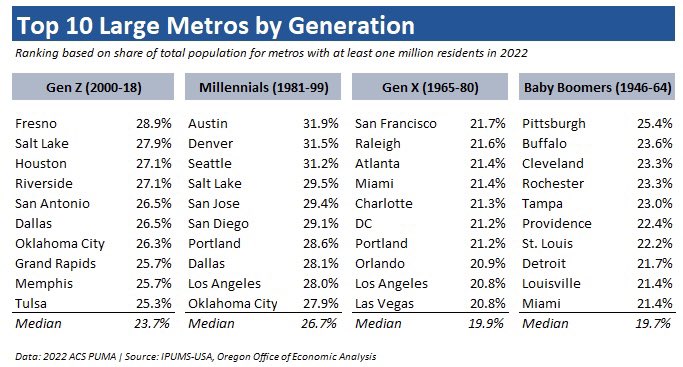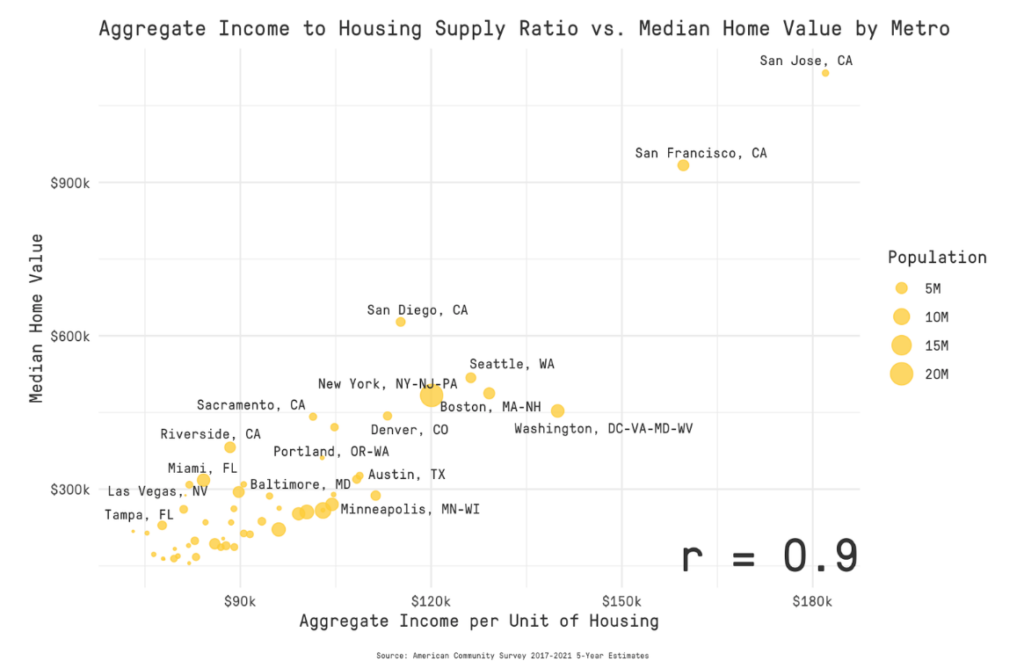Must Read
The high, high cost of “affordable housing.” The Voice of San Diego takes a look at the pricetag of several affordable housing projects in California and finds they’re pushing and breaking through the million-dollar a unit mark. Across the 17 projects it examined, average costs were $574,000 a unit.

Many factors contributed to higher prices. For one project, parking added about $40,000 per unit to project costs. Most projects are funded by a complicated array of federal tax credits and state and local subsidies, which add delay and overhead costs to arranging projects. In California, workers on projects get paid “prevailing wages” that drive costs up further. And local governments typically require even affordable housing developers to underwrite additions or upgrades to adjacent streets and infrastructure.
Generational Metropolitan Areas. Oregon economist Josh Lehner has used Census data to develop a ranking of the top ten Metro areas for each of several demographic groups, ranging from boomers to Gen Z. Different regions of the country have different concentrations of each generation. The greatest contrast is betwen Gen Z (mostly in the Sunbelt (except Grand Rapids), and Boomers (mostly in industrial cities of the Northeast and Midwest).
New Knowledge
Income and housing prices. Why is housing more expensive in some cities than others. A recent web-post from Kasey Klimes looks at the statistical relationship between a number of housing and income statistics for the nation’s metropolitan areas, can comes up with some interesting results.
A key finding is that there’s a strong statistical relationship between median home values and aggregate income per unit of housing. Median home values tend to be highest in those places where total incomes, relative to the housing stock, are the highest. San Jose and San Francisco are outliers, both in terms of median home values–over $900,000–and aggregate levels of income per housing unit (more than $150,000 in San Francisco, and more than $180,000 in San Jose). Overall, the correlation coefficient is 0.9, indicating that variations in income per housing unit statistically explain about 80 percent of the observed variation in median house prices across these large metro areas.
The strong correlation between income per housing unit and median home prices points to two possible ways to lower home prices. One is to have lower incomes, which is hardly attractive. Places like St. Louis and Detroit have inexpensive homes because incomes are so low. The preferable way to address affordability is to increase the denominator by adding more homes. As Klimes argues:
The only real way to reduce housing costs is to build more housing for that aggregate income to flow into.”Build more housing” isn’t a singular policy, but a coherent suite of policies that begins to address the challenge on a variety of regulatory fronts. That suite includes eliminating single-family zoning (as recently enacted in Minneapolis and Portland), abolishing parking minimums, and updating building codes to allow more efficient use of floor plates with single-stair apartment buildings.
The data presented here are a helpful reminder that demand, in the form of income levels will play a key role in determining home prices, and that in the face of high incomes, cities can either let rising incomes bid up a fixed or slowly growing supply of income, or achieve greater affordability by allowing a rapid expansion of housing supply.
In the News
Streetsblog published a guest commentary by City Observatory’s Joe Cortright, calling out the way in which the “Reconnecting Communities” program is being used to subsidize a massive freeway expansion project in Portland.



